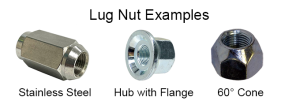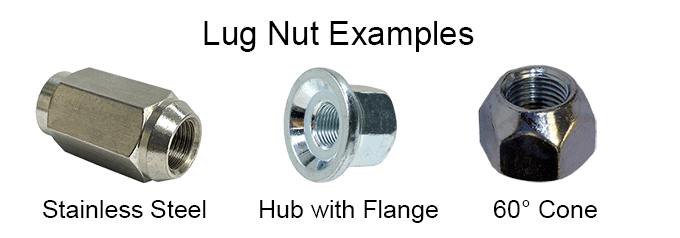
Flanged Lug Nuts:
- Design: Flanged lug nuts have a flat, wide surface at the base, which acts as a built-in washer. This flange is typically larger in diameter than the nut itself.
- Purpose: The flange provides a larger surface area to distribute the clamping force over a greater area of the wheel. This helps in maintaining the wheel’s alignment and reduces the chance of the nut loosening.
- Application: These are often used in heavier vehicles or trailers where a more secure fit is necessary due to the higher loads. The flange helps to evenly distribute the pressure and reduce wear on the wheel.
Coned (Conical) Lug Nuts:
- Design: Coned lug nuts have a tapered base, usually at a 60-degree angle. This taper fits into a matching conical seat in the wheel.
- Purpose: The conical design centers the nut on the wheel for a precise fit. As the nut is tightened, the conical base is pulled into the seat, ensuring a snug and centered fit.
- Application: Coned lug nuts are common in passenger vehicles. The conical shape provides an even distribution of pressure while ensuring the wheel is accurately positioned on the hub.
The choice between flanged and coned lug nuts depends on the wheel design and the specific requirements of the vehicle. It’s crucial to use the type of lug nut that matches the wheel design for safety and proper wheel function. Using the incorrect type can lead to wheel misalignment, uneven wear, and potentially hazardous situations.

